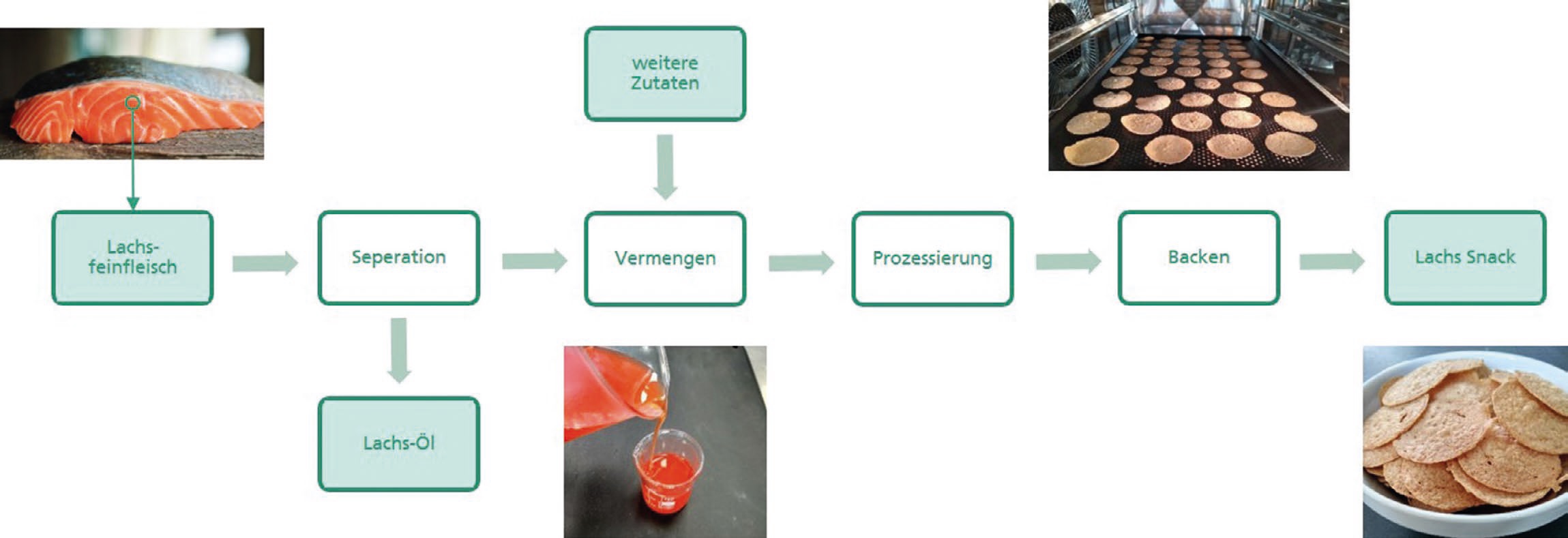Production of a protein-rich snack from by-products of the fishing industry
Fish is an important protein source and, according to the Food and Agriculture Organization of the United Nations (FAO), 6.7% of human protein needs are met through marine resources. Fish and aquaculture provided 171 million tonnes of fish in 2016, with 87% used for direct human consumption.
In industrialized countries, consumers prefer fish fillets due to the reduced amount of preparation required, resulting in up to 70% byproducts in the industrial processing of fish and shellfish, depending on the species and the season. There is a need for action due to an increase in population, growing prosperity and the resulting increased demand for animal protein. For both environmental and economic reasons, therefore, these by-products should be made available for human consumption. In addition to the environmental concerns, there is an increased interest on the part of the fishing industry to produce marketable products based on by-products, as this can increase the value of the entire product fish.
The German Nutrition Society recommends eating fish twice a week, as fish not only act as a source of protein, but also provide a beneficial fatty acid composition for human consumption. Salmon is characterized by a high protein content and a high content of omega-3 fatty acids. This composition should be used in the project presented here for the development of a protein-rich snack product. The growing market share in the field of (high-protein) snack products and the increasing demand of consumers for products with added health benefits, while using natural ingredients ('clean label') can be served.
The prototype development of the fish snack was based on the typical characteristics of established snack products on the market. These are characterized by both a crispy texture and a savory taste. Also color and shape should correspond to a snack, in order to avoid irritation of the consumers.
In addition, the consumer's expectations regarding the taste of a fish product should be fulfilled. The engineering company Baader, which u.a. specialized in fish processing, has developed the "baadering" process for the production of salmon pork. This semi-finished product was the starting material of food technology development.
On a technical scale, a crispy, hearty fish snack could be produced, which has a protein content of almost 25% in relation to the total calorific value. Thus, the snack product according to Regulation (EC) No. 2006/1924 may be declared both as "protein source" and "with a high protein content". The proportion of omega-3 fatty acids is also higher than the EU minimum requirement for a nutrition and health claim.
The snack may be declared as a source of omega-3 fatty acids and carry the health claims "for the maintenance of normal cholesterol, normal vision, normal brain and heart function". These are statements of high relevance to the health-conscious consumer. In terms of taste, visitors to the in-house exhibition of Baader GmbH + Co. KG were able to convince themselves in September.
Achieved project goal:
Conversion of a fish by-product into a high-protein snack with a favorable fatty acid spectrum.
